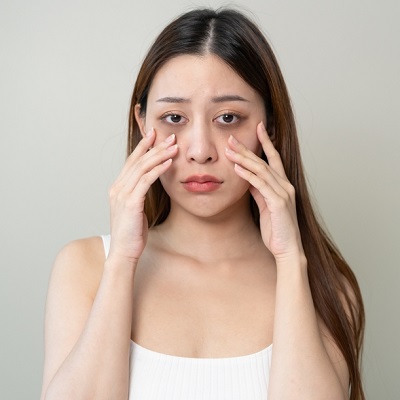Dark Circles under the eyes give a tired, and even unhealthy appearance, and cannot always be corrected with store-bought products. Surgical solutions are appropriate for persons looking for a more serious and permanent solution to the problem. Here in this blog, we will discuss what is the best surgery for dark circles in Islamabad.
Understanding Dark Circles:
Dark circles are usually caused by a combination of several factors:
DNA: Some people inherit genes that make them averse to dark circles.
Thin Skin: Other symptoms are those cuts that turn very red around the eyes due to thin skin that can reveal the blood vessels.
Aging: As the skin begins to age, it loses many of its natural components such as collagen and elasticity causing the black circles to become more visible.
Allergies and Lifestyle Factors: Causes of dark circles include say, lack of sleep, allergy, and inadequate fluid intake.
Best Surgical Options for Dark Circles:
Lower Blepharoplasty
What it Treats: For the treatment of dark circles, lower blepharoplasty is one of the most successful surgeries, particularly if the circles are accompanied by puffy or hanging skin. It focuses on loose skin and fatty tissue and muscle in the region of the lower eyelids.
How it Works: In this treatment a surgeon eliminates fat or rearranges it beneath the eye so as to eliminate hollows or protuberances that form shadows. The surgery pulls the skin and thus restores the original appearance of a young woman.
Benefits: Lesser degrees of blepharoplasty imply uniformity in the under-eye contour, and a remarkable decrease in shadows and puffiness; all of which make dark circles almost negligible.
Fat Transfer or Fat Grafting:
What it Treats: Fat transfer is appropriate for patients with dark circles due to fat atrophy in the under-eye area which results in animation.
How it Works: One is a minimally invasive procedure in which fat is extracted from another part of your body, purified, and then injected under your eyes. The extra volume cuts down hollowness and shadows to give a more vibrant look to skin or hair.
Benefits: Fat transfer can also be regarded as natural since you use your body fat to fulfill this procedure.
Other Options for the Treatment of Dark Circles:
Dermal Fillers:
What it Treats: When surgery is not an option, then dermal fillers offer a non-permanent but competent solution for dark circles brought on by hollowness under the eyes.
How it Works: Fatty tissue under the eyes also tends to recede as we age, so hyaluronic acid fillers like Restylane or Juvederm are injected beneath the eyes to enhance volume and decrease the visibility of dark circles.
Benefits: Dermal fillers are less invasive, do not need downtime, and are timed in a shorter time. The specific brand may take instant effects, but it might only take 6-18 months for the effects to become noticeable.
Laser Resurfacing:
What it Treats: Laser resurfacing is useful for dark circles that result from changes in the color of the skin or lack of skin in that area.
How it Works: Skin Booster works through a laser and attacks pigmented zones; the treatment also stimulates collagen production which results in the formation of a thicker skin barrier over the blood vessels that can cause darkness.
Benefits: Laser resurfacing is a nonsurgical procedure that does not require post-treatment bed rest and has a shorter recovery period. It diminishes skin dullness, reduces the skin tone intensity, enhances collagen level, and hence improves under-eye skin appearance.
Chemical Peels:
What it Treats: Dark circles due to hyperpigmentation can be treated with chemical peels.
How it Works: A chemical peel is the process of applying an agent on the skin whereby the outer layers are shed and at the same time promote the formation of new layers.
Benefits: Chemical peels are not surgical treatments and, when performed correctly, chemical peels produce a tangible skin improvement. But, they may require several sessions to give the best results.
Choosing the Right Option:
The best treatment for dark circles relies on the causes given below:
Volume Loss:
If flattening or shading causes dark circles, then fat transfer or fillers will work best.
Puffiness or Loose Skin:
Fat causes the shadow area under the eyes, which is most often addressed through lower blepharoplasty.
Pigmentation:
Hyper pigmentation-related skin discolorations can be good candidates for laser resurfacing or chemical peeling.
Recovery and Aftercare Tips:
The chosen procedure will affect the time it takes to recover. Generally in
lower Blepharoplasty most of the patients have mild swelling from the sutures for about 1-2 weeks but they have best results within 2-3 months.
Fat Transfer and Dermal Fillers:
It is almost painless and there can be a mild inflammation or discoloration of the area that disappears within the next few days.
Laser Resurfacing and Chemical Peels:
The above treatments may lead to skin redness and the formation of skin flakes for about one to one and a half weeks depending on the degree.
It is important not to expose the treated area to the sun strictly. Follow your doctor’s recommendations and wait for the skin to heal before applying any makeup that cause infection or rash.
Final Thoughts:
It is hard to remove dark circles by using the creams and lotions that are available in the market. The best techniques to remove them are surgical and non-surgical approaches. The cosmetic treatment for dark circles includes lower blepharoplasty, fat transfer, dermal fillers, laser resurfacing, and chemical peels. To get the desired results for reducing dark circles in Islamabad, visit SKN Cosmetics and consult with our best aestheticians and surgeons for both surgical and nonsurgical options.




